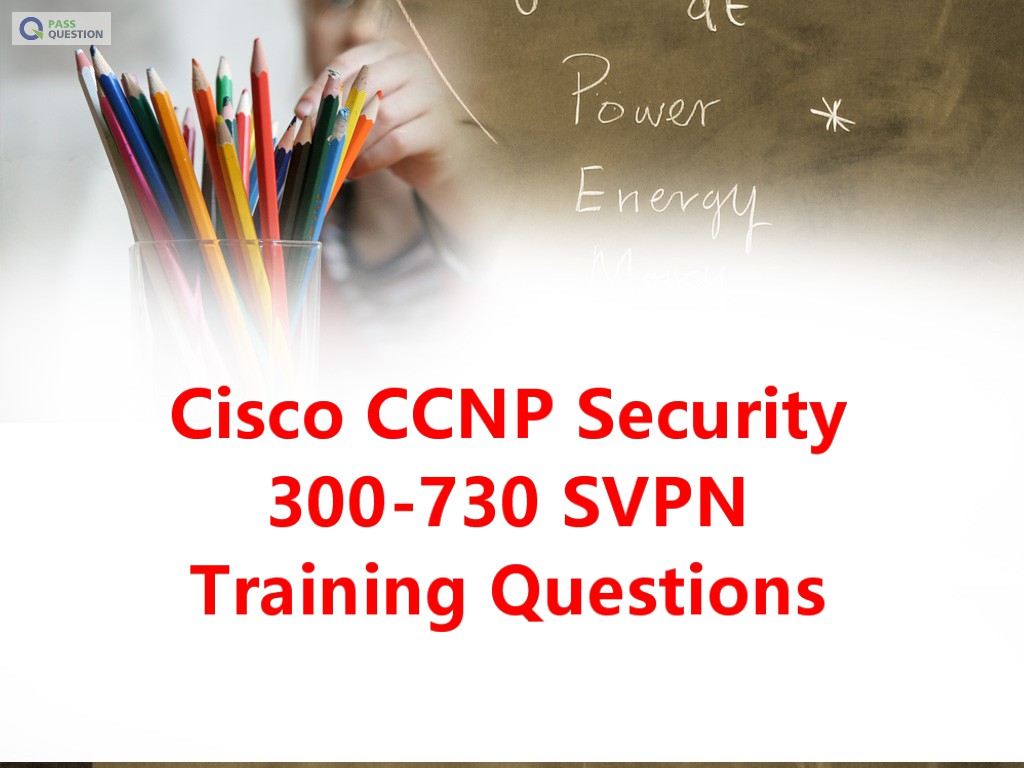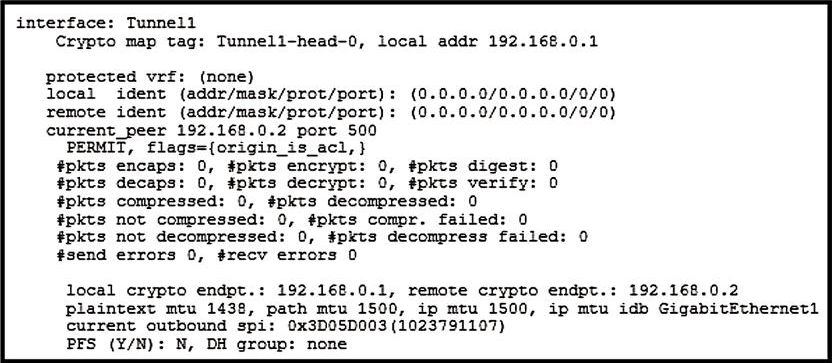Cisco CCNP Security 300-730 SVPN Training Questions
300-730 Implementing Secure Solutions with Virtual Private Networks (SVPN) exam is new available now. PassQuestion provides you the latest Cisco CCNP Security 300-730 SVPN Training Questions to help you best prepare for your test.This 300-730 questions and answers will help you to understand question format, skills evolution and helpful resources for further study. The CCNP Security 300-730 SVPN Training Questions will be your first-hand exam experience what is like to have a real Cisco 300-730 exam.

300-730 Exam Information - Implementing Secure Solutions with Virtual Private Networks (SVPN)
The Implementing Secure Solutions with Virtual Private Networks v1.0 (SVPN 300-730) exam is a 90-minute exam associated with the CCNP Security, and Cisco Certified Specialist - Network Security VPN Implementation certifications. This exam tests a candidate's knowledge of implementing secure remote communications with Virtual Private Network (VPN) solutions including secure communications, architectures, and troubleshooting.
Achieving CCNP Security certification proves your skills with security solutions. To earn CCNP Security certification, you pass two exams: one that covers core security technologies and one security concentration exam of your choice, so you can customize your certification to your technical area of focus.
Cisco 300-730 Exam Topics Objectives
This exam tests your knowledge of implementing secure remote communications with Virtual Private Network (VPN) solutions, including:
Site-to-site Virtual Private Networks on Routers and Firewalls
Remote access VPNs
Troubleshooting using ASDM and CLI
Secure Communications Architectures
View PassQuestion Cisco CCNP Security SVPN 300-730 Free Questions
1.A second set of traffic selectors is negotiated between two peers using IKEv2.
Which IKEv2 packet will contain details of the exchange?
A. IKEv2 IKE_SA_INIT
B. IKEv2 INFORMATIONAL
C. IKEv2 CREATE_CHILD_SA
D. IKEv2 IKE_AUTH
Answer: B
2.On a FlexVPN hub-and-spoke topology where spoke-to-spoke tunnels are not allowed, which command is needed for the hub to be able to terminate FlexVPN tunnels?
A. interface virtual-access
B. ip nhrp redirect
C. interface tunnel
D. interface virtual-template
Answer: D
3.Which statement about GETVPN is true?
A. The configuration that defines which traffic to encrypt originates from the key server.
B. TEK rekeys can be load-balanced between two key servers operating in COOP.
C. The pseudotime that is used for replay checking is synchronized via NTP.
D. Group members must acknowledge all KEK and TEK rekeys, regardless of configuration.
Answer: A
4.Refer to the exhibit.

Which two tunnel types produce the show crypto ipsec sa output seen in the exhibit? (Choose two.)
A. crypto map
B. DMVPN
C. GRE
D. FlexVPN
E. VTI
Answer: BE
5.Which two changes must be made in order to migrate from DMVPN Phase 2 to Phase 3 when EIGRP is configured? (Choose two.)
A. Add NHRP shortcuts on the hub.
B. Add NHRP redirects on the spoke.
C. Disable EIGRP next-hop-self on the hub.
D. Enable EIGRP next-hop-self on the hub.
E. Add NHRP redirects on the hub.
Answer: CE
6.Refer to the exhibit.

A customer cannot establish an IKEv2 site-to-site VPN tunnel between two Cisco ASA devices.
Based on the syslog message, which action brings up the VPN tunnel?
A. Reduce the maximum SA limit on the local Cisco ASA.
B. Increase the maximum in-negotiation SA limit on the local Cisco ASA.
C. Remove the maximum SA limit on the remote Cisco ASA.
D. Correct the crypto access list on both Cisco ASA devices.
Answer: B
- TOP 50 Exam Questions
-
Exam
All copyrights reserved 2025 PassQuestion NETWORK CO.,LIMITED. All Rights Reserved.

